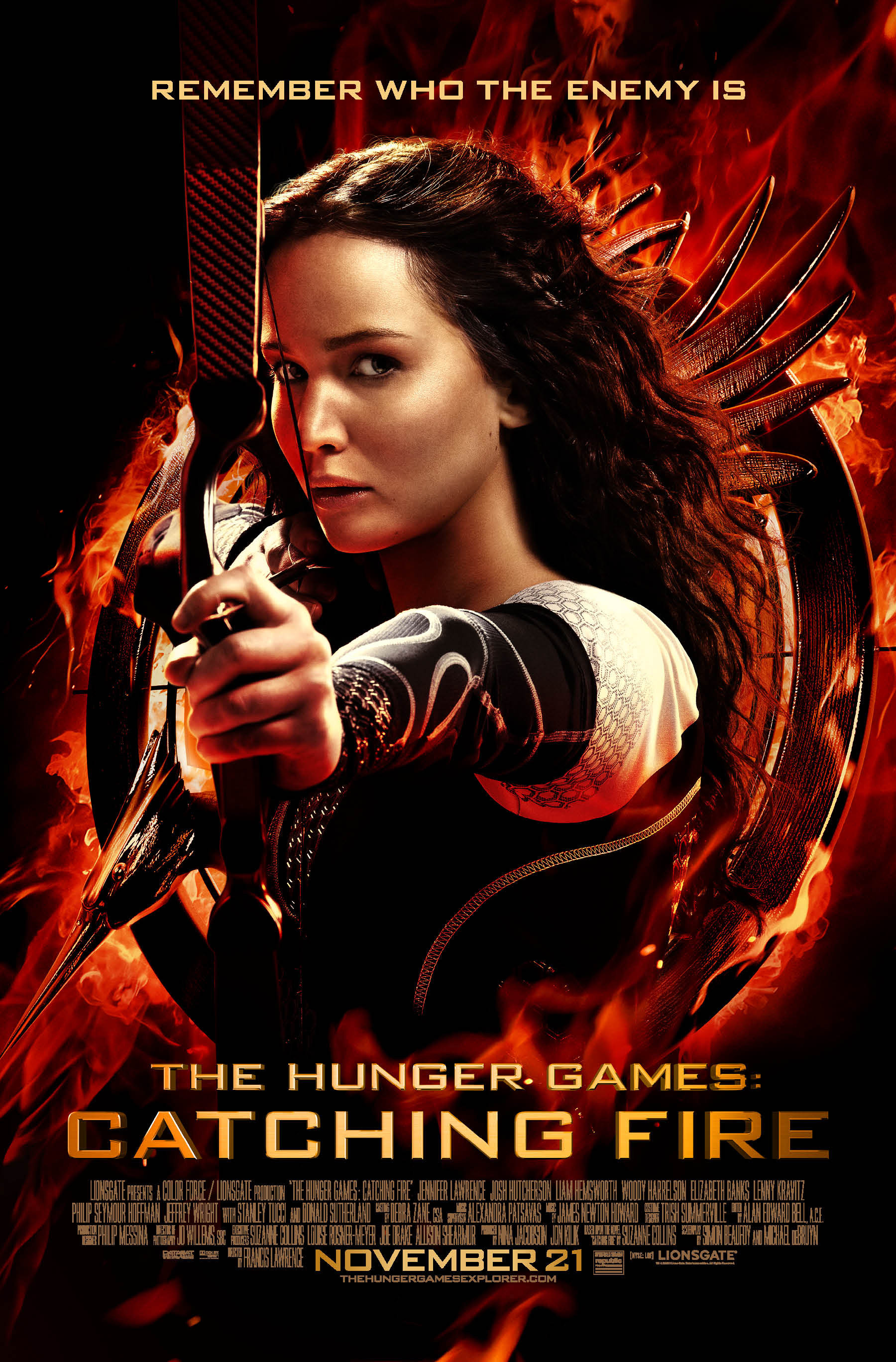Cord Reviews: Catching Fire

When the first installment of the film adaptation of the dystopian trilogy The Hunger Games by Suzanne Collins blew everyone away in 2012, audiences were left wondering how on earth anyone could reproduce the success that the first film generated. Director Francis Lawrence managed to make The Hunger Games seem like child’s play compared to the 2013 installment The Hunger Games: Catching Fire.
The Cord Editorial Board meticulously watched Catching Fire and sifted through all the negatives and positives of the film. Here are the panel’s thoughts on…
…the plot.
The plot was simultaneously agreed to be a natural maturation from the original Hunger Games. Catching Fire explored much darker themes, such as dealing with the lingering effects of Post Traumatic Stress Disorder (PTSD).
Alanna Fairey, Life Editor at The Cord, noted that, “For people who haven’t read the book, I feel like they could follow along easily. I went with people who hadn’t read the book but they understood and followed the plot easily.”
Lena Yang, Graphic Editor at The Cord, pointed out that the linear plot, rather than the flashback-heavy Hunger Games, made it more interesting and more inclusive.
Fairey, Yang and Kate Turner, Visual Director at The Cord, have all read the book and found it was extremely true to the plot, even down to some dialogue spoken by the characters.
…the camera.
All of the panelists were extremely thankful that the shaky camera shots did not make a reappearance.
Cristina Almudevar, Arts Editor at The Cord, mentioned that the shaky camera shots from The Hunger Games made her feel nauseous but thankfully that didn’t happen this time. The shots were very clean and smooth.
…the characters.
The characters matured greatly from Hunger Games to Catching Fire. Almudevar pointed out Jennifer Lawrence’s portrayal of Katniss who spent the entire time dealing with PTSD.
Yang said, “Everyone who was introduced in this movie didn’t seem overwhelming; they were nicely integrated into the storyline.”
…the acting.
Almudevar noted that Finnick Odair’s (Sam Claflin) transition from intolerable asshole to Katniss’ friend and ally was extremely well done. The panel also greatly enjoyed Jena Malone as Johanna Mason.
“I liked how there was this undertone of humour [in Malone’s introduction]. They didn’t do it in a way that was inappropriate and was still true to the novel,” said Fairey.
This was seen in other characters such as Caesar (Stanley Tucci). Catching Fire is not a humorous concept by any means but the characters managed add to in a bit of humour to some scenes while still being respectful of the overall theme of the movie. Almudevar mentioned that Lawrence’s acting was average but a bit flawed—at certain times she simply played herself while in other scenes she appeared to be overacting.
…the casting.
The cast changes from Hunger Games to Catching Fire were numerous. Though characters such as Haymitch Abernathy (Woody Harrelson), Effie Trinket (Elizabeth Banks) and Primrose Everdeen (Willow Shields) returned, there were still more new characters than returning characters. Yang said that she thought all of the side characters were extremely well casted and true to the description of the book.
…the ending.
Turner, Yang and Fairey, who all have read the book, said that the novel ending was much better executed than the film ending. It is faithful to the novel, but cliff-hanger endings rarely make the transition from novel to film successfully.
Almudevar, who never read the novel, was extremely confused. “I thought I was only an hour and a half in and thought they were setting up the plot brilliantly. But then it just ended. It was awkward and infuriating—there was no closure at all,” she argued.
Thankfully, it has been confirmed that the next installment of The Hunger Games: Mockingjay will be released on November 21, 2014.

